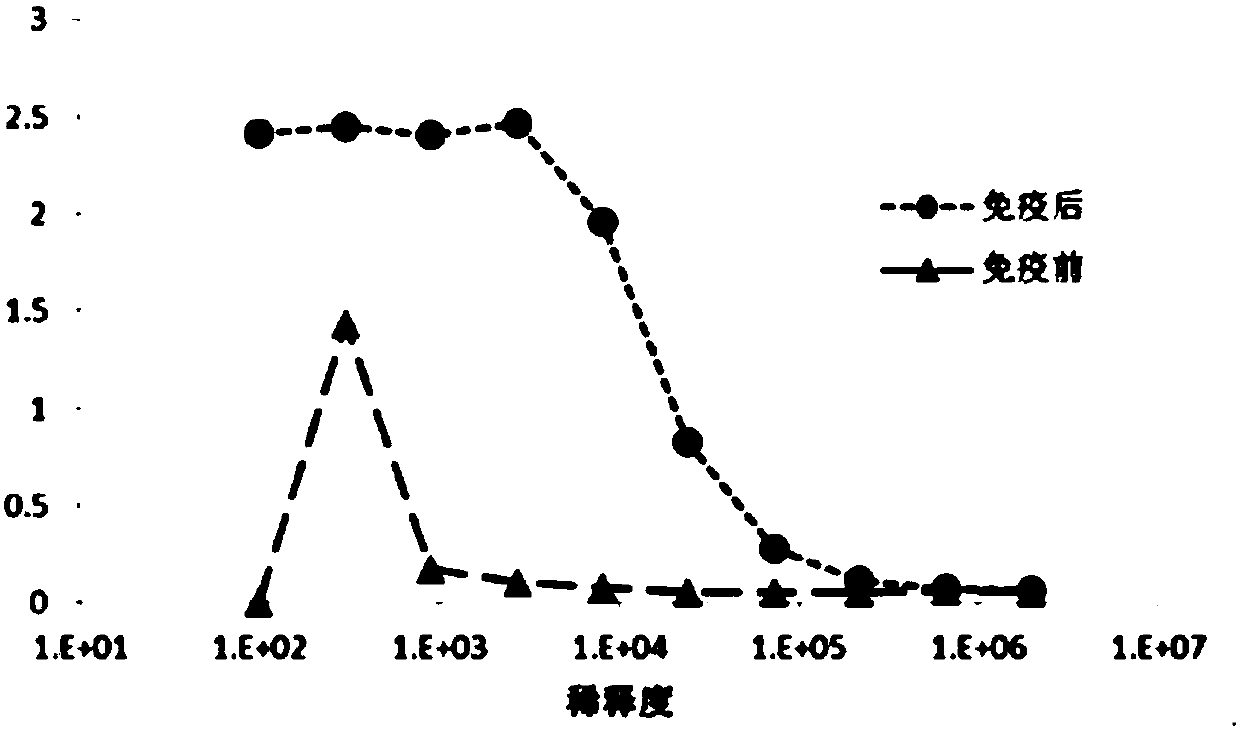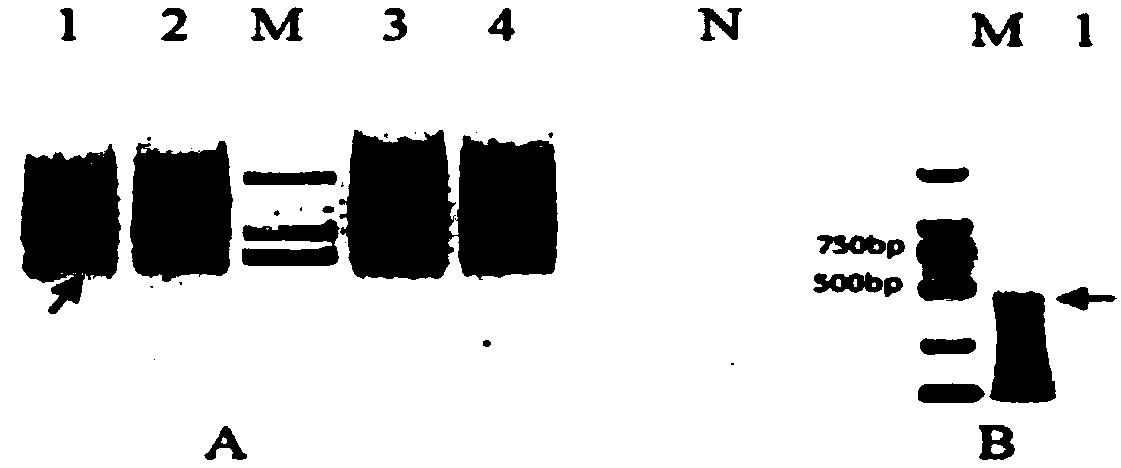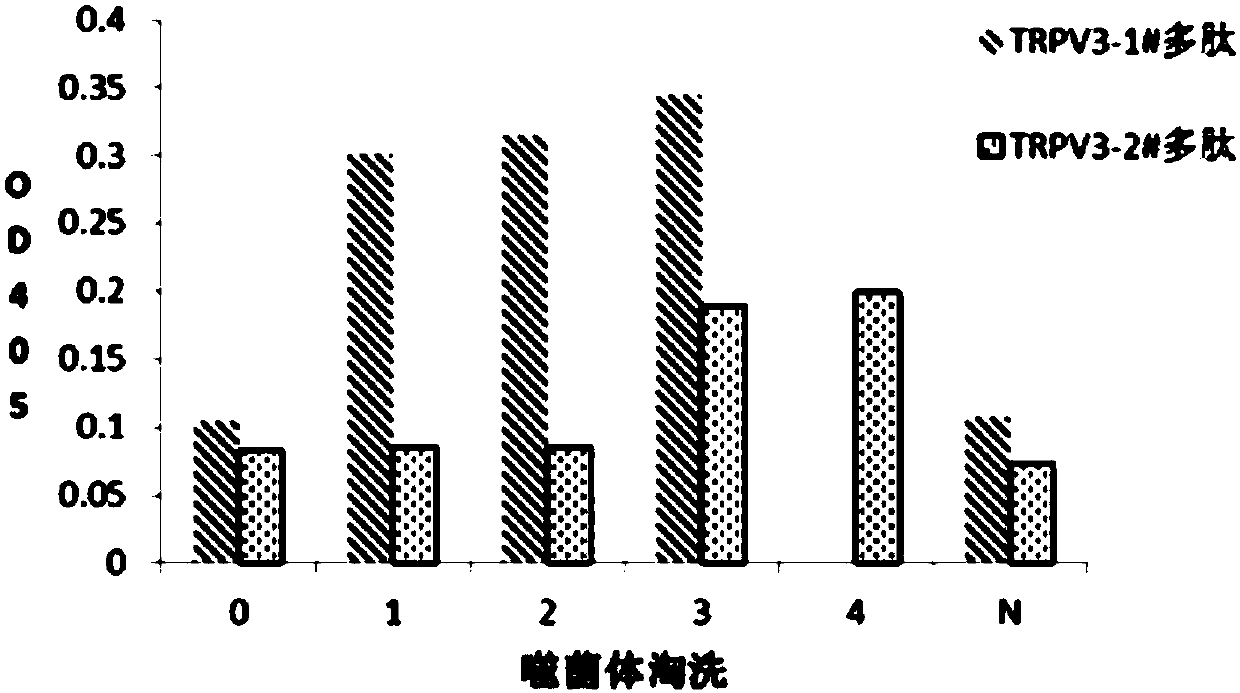Nano antibody and preparation method thereof
A nanobody and antibody technology, applied in the direction of antibodies, botanical equipment and methods, biochemical equipment and methods, etc., can solve problems such as the advent of antibody drugs, and achieve the effects of high stability, high expression, and low immunogenicity
- Summary
- Abstract
- Description
- Claims
- Application Information
AI Technical Summary
Problems solved by technology
Method used
Image
Examples
Embodiment 1
[0108] Embodiment 1 TRPV3 antigen preparation and animal immunization
[0109] (1) Antigen synthesis. Through chemical synthesis, two extramembrane regions of human TRPV3 protein were synthesized, namely CSYYRPREEEAIPHP (SEQ ID NO: 19) and SYGSFSDAVLELFKLTIC (SEQ ID NO: 20), as antigens for animal immunization.
[0110] (2) Alpacas are immune. Take 800ug of the polypeptide and mix it with an equal volume of Freund's adjuvant, and inject it into the hind leg muscle of the alpaca. Before immunization, 10 mL of blood was collected from the alpaca's marginal ear vein. Immunization was performed every two weeks, and a total of 4 immunizations were carried out. At the same time, the peripheral blood of the alpaca was collected, placed on ice, and transported back to the laboratory.
[0111] (3) ELISA detection of TRPV3 antibody production. After the 4 times of immunization, the ELISA method was used to detect whether the serum contained the enrichment of antibodies against TRPV3...
Embodiment 2
[0112] Phage display library construction of embodiment 2TRPV3 nanobody
[0113] (1) PBMC separation. Alpaca blood samples were taken before and after immunization, and the lymphocytes in the peripheral blood of the alpaca were separated and purified by Percoll density gradient centrifugation. After the cells were washed two to three times with PBS, RNA later was added for RNA extraction.
[0114] (2) TRPV3 nanobody library construction.
[0115] Total RNA extraction. Take the lymphocytes separated in (1), add 1ml Trizol, let stand at room temperature for 10min, add 0.2ml chloroform, shake vigorously, let stand at room temperature, wait for the solution to separate layers (about 10min), centrifuge at 12,000rpm, and collect the upper aqueous phase , add an equal volume of isopropanol, mix well, and let stand at room temperature for 15 minutes. After the nucleic acid is precipitated, centrifuge at a high speed to remove the supernatant. Add 1 ml of 75% ethanol (prepared with D...
Embodiment 3
[0127] Example 3 Obtaining High Affinity TRPV3 Nanobodies Using Phage Display Technology
[0128](1) Affinity TRPV3 nanobody phage library panning. Take 100ng of antigen to coat the ELISA plate and incubate overnight at 4°C. The next day, add the TRPV3 nanobody phage library obtained above, at room temperature, and incubate for 2 hours; wash the wells 10 times with PBST, add 100 μl triethylamine, room temperature, and incubate for 30 minutes. The collected phages are the TRPV3 nanobody phage library obtained by affinity panning ; Take 10 μl of infected TG cells to coat the plate for determining the number of clones after screening, and the remaining screened phage library is used for further amplification and rescue.
[0129] (2) Amplification and rescue of phage library after screening. The amplification and rescue method is the same as in Example 2 (4). The obtained phage library after the first round of screening is stored at 4°C and used for the second round of screening...
PUM
 Login to View More
Login to View More Abstract
Description
Claims
Application Information
 Login to View More
Login to View More - R&D
- Intellectual Property
- Life Sciences
- Materials
- Tech Scout
- Unparalleled Data Quality
- Higher Quality Content
- 60% Fewer Hallucinations
Browse by: Latest US Patents, China's latest patents, Technical Efficacy Thesaurus, Application Domain, Technology Topic, Popular Technical Reports.
© 2025 PatSnap. All rights reserved.Legal|Privacy policy|Modern Slavery Act Transparency Statement|Sitemap|About US| Contact US: help@patsnap.com



